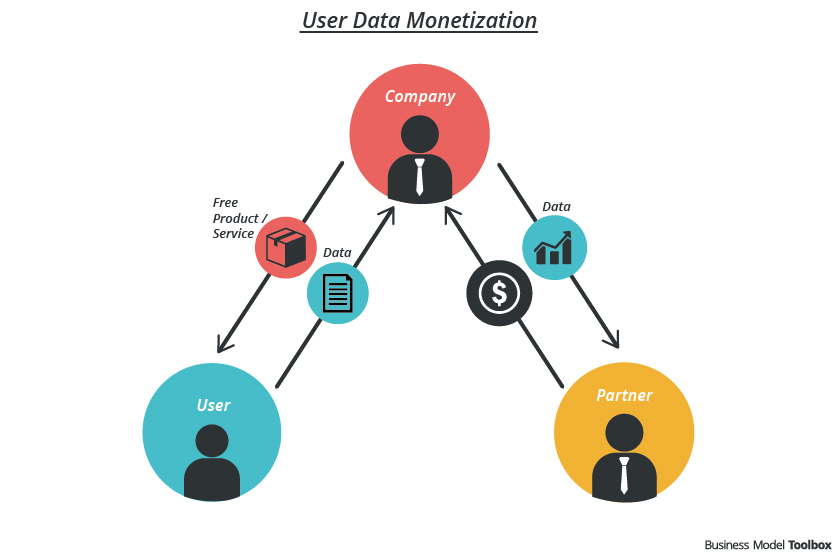Customer Data Monetization

Tags
Description
There are different kinds of value propositions that can be created by selling:
- Raw data
- Processed data
- Insights
The aim of this pattern is the sale of data. For information on creating additional value out of data, see “Data Leverage” business model pattern (follows soon).
When collecting, processing and selling user data, it is important to respect ethical considerations, like data privacy and the sensitivity of data.
Success factors
Examples
Analyze and sell user data to third parties in order to place personalized advertisements.
PatientsLikeMe
Gather customer data on diseases, anonymize them and sell them to pharmaceutical and health companies
Telefonica, Verizon, Orange
… and other telecommunication firms sell data on the locations, movements, web browsing habits and other data categories to third parties.
Payback
Loyalty card for different retail businesses: customer can collect points and redeem them – Payback tracks customer behavior and sells the information back to retail businesses.
Chances
- Create new / additional revenue streams
- Offer a user service for free
- Create win-win business models for users and customers
- Let users participate by taking a share from the revenue created
Risks
- Disrespect of data privacy and loss of reputation
- Cyber attacks
Responsibility
Resources
- Accenture: What is your data worth
- New York Times: Mark Zuckerberg, Let Me Pay for Facebook
- NationalJournal: Obama’s ‘Privacy Bill of Rights’ Gets Bashed from All Sides


Great summary of this business model pattern! Data has the potential to become a true alternative to financing free offerings through advertising. In my opinion trust will become a key resource for companies. The more trust they earn also through transparency, the more data users will be willing to provide. I’m looking forward to further patterns to be described.
I need to learn about business models for my master course.
Thank you for your lucid explanation.